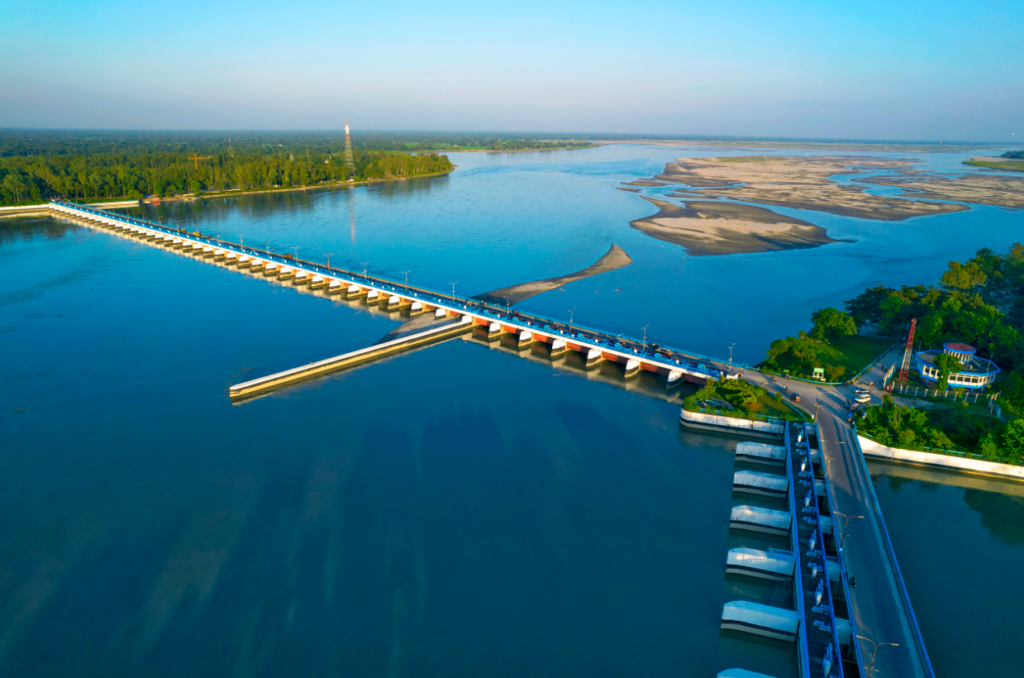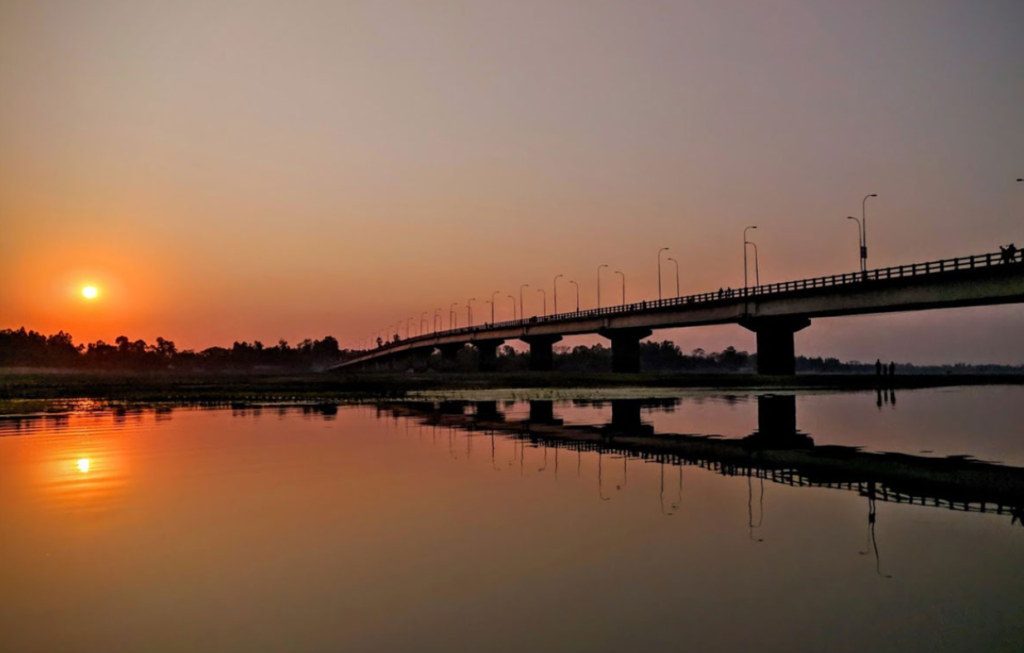Nestled in the northernmost part of Bangladesh, Lalmonirhat is a district that captivates visitors with its serene landscapes, vibrant culture, and historical depth. Enriched by flowing rivers, lush greenery, and the warmth of its people, Lalmonirhat remains an underrated yet significant destination in the Rangpur Division. From the Teesta Barrage to historical enclaves, the district offers an array of attractions for explorers seeking authenticity and tranquility.
Geography and Natural Beauty
Lalmonirhat, bordered by India to the north, is a land where rivers and plains dominate the topography. The district spans approximately 1,241 square kilometers and is crisscrossed by the Teesta, Dharla, and Saniajan rivers. These rivers play an essential role in shaping the district’s agricultural productivity and its scenic charm.
The floodplains of Lalmonirhat are covered in fertile soil, making them an agricultural heartland. The region comes alive with vibrant greenery during the monsoon and transforms into a golden expanse during the harvest season. The rivers serve as lifelines, providing irrigation, transportation, and fishing opportunities while enhancing the district’s aesthetic appeal.
Historical and Cultural Legacy
Lalmonirhat’s historical significance is intertwined with its strategic location and the pivotal role it played during the Liberation War of 1971. This district witnessed brave efforts by freedom fighters and bears testimony to the resilience of the Bangladeshi spirit.
Culturally, Lalmonirhat is a melting pot of traditions, with influences from both local and neighboring Indian cultures. Folk music, traditional crafts, and local festivals add vibrancy to the lives of its people. The district’s history and culture are preserved through its monuments, folklore, and community practices.
Key Attractions in Lalmonirhat
1. Teesta Barrage

The Teesta Barrage is the largest irrigation project in Bangladesh, designed to harness the power of the Teesta River for agricultural development. The barrage is not only an engineering marvel but also a scenic spot where visitors can enjoy the river’s tranquil flow and the surrounding greenery.
2. Dharla Bridge

The Dharla Bridge spans the Dharla River, offering stunning views of the waterway and the landscapes on either side. The bridge is particularly enchanting during sunrise and sunset, making it a favorite spot for photographers and travelers.
3. Burimari Land Port
Located in Patgram Upazila, the Burimari Land Port is a bustling trade hub between Bangladesh and India. Travelers visiting this area can observe the dynamics of cross-border trade and explore the nearby markets for unique goods.
4. Tin Bigha Corridor and Dahagram-Angorpota Enclave
This enclave, once a point of tension between Bangladesh and India, now stands as a symbol of peaceful coexistence. The Tin Bigha Corridor connects Dahagram-Angorpota to the Bangladeshi mainland, allowing visitors to witness this unique geographical and historical feature.
5. Aditmari and Its Rural Beauty
Aditmari Upazila is known for its serene rural landscapes, traditional lifestyle, and agricultural activities. It is a perfect destination for those looking to immerse themselves in the simplicity and beauty of village life.
6. Kaliganj’s Historical Significance
Kaliganj Upazila houses several historical mosques and temples that reflect the rich architectural heritage of the region. These sites attract visitors interested in exploring the district’s historical and cultural dimensions.
Upazilas of Lalmonirhat
The district comprises five administrative regions, each with distinct attractions and cultural significance:
- Lalmonirhat Sadar
- The heart of the district, featuring administrative offices, educational institutions, and bustling marketplaces.
- A hub for local festivals and cultural events.
- Hatibandha
- Renowned for its vast agricultural lands and serene environment.
- Offers insights into traditional farming and rural life.
- Kaliganj
- A treasure trove of historical monuments, including old temples and mosques.
- Known for its vibrant local markets and community gatherings.
- Aditmari
- Features picturesque villages and natural beauty.
- Ideal for eco-tourism and cultural exploration.
- Patgram
- Home to the Burimari Land Port and Tin Bigha Corridor.
- A blend of trade activities and cross-border cultural exchanges.
Economy and Livelihood
The economy of Lalmonirhat is predominantly agricultural. The fertile land supports the cultivation of rice, jute, wheat, and vegetables. Fishing is another vital economic activity, thanks to the district’s rich riverine resources.
Additionally, the Burimari Land Port contributes significantly to the district’s economy, facilitating trade between Bangladesh and India. Handicrafts and traditional textiles produced by local artisans add to the district’s economic diversity and cultural richness.
Festivals and Cultural Celebrations
The people of Lalmonirhat celebrate various festivals with zeal and enthusiasm. Pohela Boishakh (Bengali New Year) is marked by colorful fairs and cultural performances. Religious festivals like Eid, Durga Puja, and Christmas are celebrated harmoniously, reflecting the district’s diverse cultural fabric.
Folk music, especially Bhatiali and Baul songs, forms an integral part of the local culture. These melodies, often inspired by the rivers and nature, echo the soul of Lalmonirhat’s people.
Best Time to Visit
The ideal time to visit Lalmonirhat is during the winter months, from November to February. The weather is pleasant, and the rivers and fields are at their most beautiful. Winter is also the season for migratory birds, adding a unique charm to the district’s wetlands and waterbodies.
Getting to Lalmonirhat
Lalmonirhat is accessible by road and rail from Dhaka and other major cities. Train journeys, in particular, are a popular choice for travelers seeking a scenic route through the countryside.
Conclusion
Lalmonirhat is a district where nature, history, and culture converge to create a destination of unmatched tranquility and charm. From its iconic rivers and engineering marvels to its historical landmarks and cultural richness, Lalmonirhat has something to offer every traveler.
Whether you’re admiring the Teesta Barrage, exploring the Tin Bigha Corridor, or simply soaking in the serene beauty of its rural landscapes, Lalmonirhat promises an experience that lingers in your heart. It’s a testament to the enduring beauty and cultural heritage of Bangladesh, waiting to be discovered.




